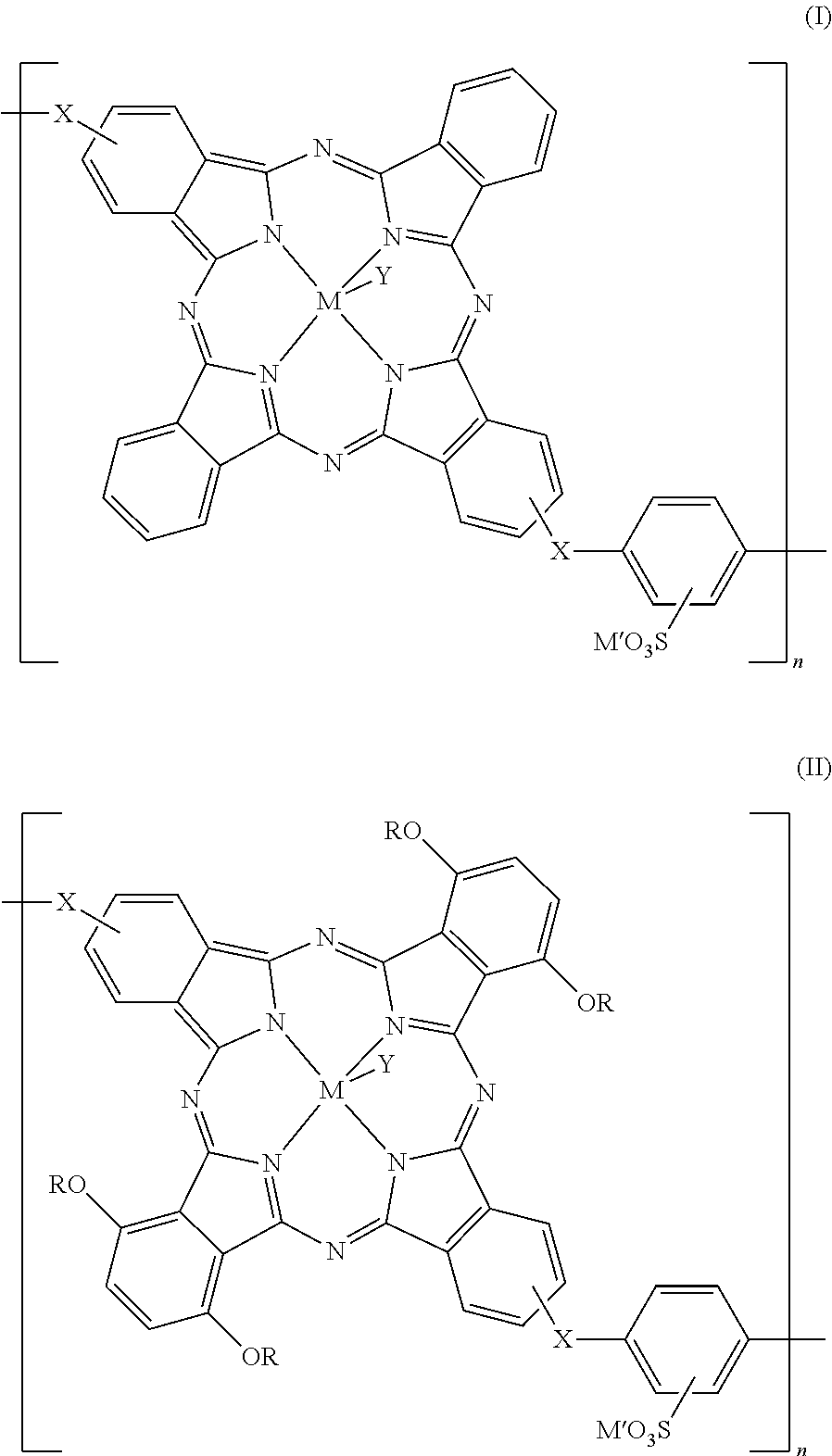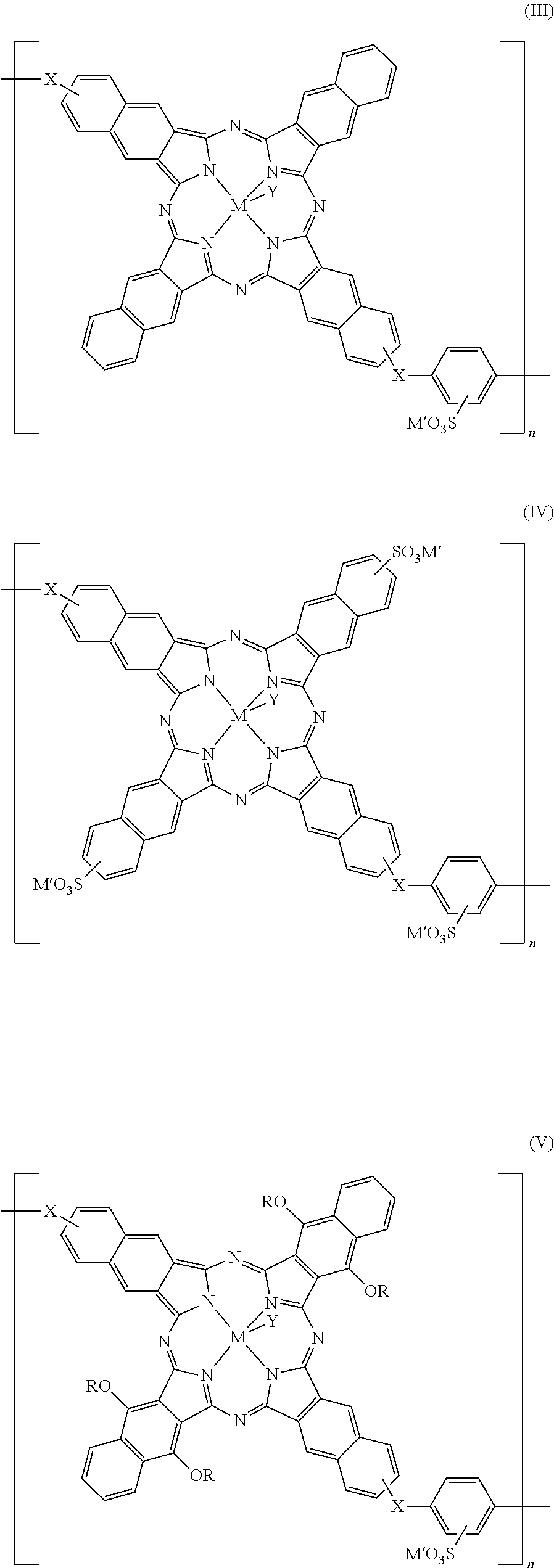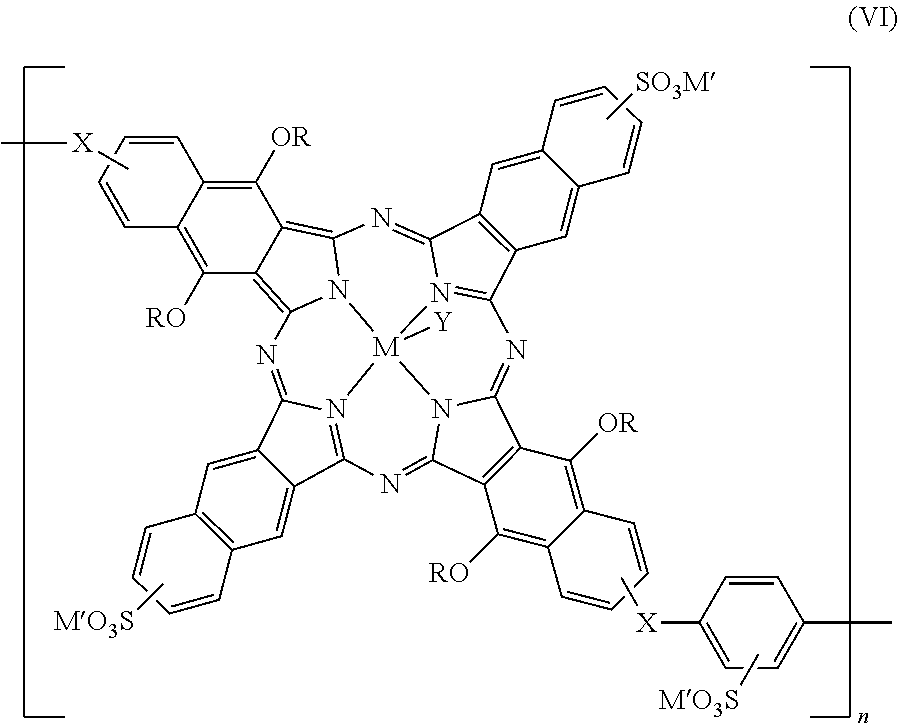Phthalocyanines and naphthalocyanines with near-ir absorptions for inkjet inks
a technology of naphthalocyanines and inkjet inks, which is applied in the direction of porphines/azaporphines, inks, organic dyes, etc., can solve the problems of poor print quality, nozzle blockage, and inability to achieve near-ir absorption of inkjet inks,
- Summary
- Abstract
- Description
- Claims
- Application Information
AI Technical Summary
Problems solved by technology
Method used
Image
Examples
example 1
[0071]Indium phthalocyanine chloride (10 parts) is mixed with 1,4-bis(chloromethyl benzene) (2 parts). Then aluminum chloride (2 parts) is added to the above mixture and heated to 90° C. for 10 h. The mixture is cooled and washed with cold water to remove all the soluble materials to obtain a polymer product.
example 2
Preparation of Water Soluble Product
[0072]The polymer product obtained from Example 1 is dissolved with fuming sulfuric acid containing 20% sulfur trioxide and maintained at ambient temperature for 24 h. This mixture is poured in crushed ice and dialyzed against water with a dialysis membrane tubing of molecular weight cut off 1000 for 3 days. The dialyzed solution is collected and pH is adjusted to 7.2 with sodium carbonate. Water is removed to obtain the water-soluble product containing near-IR dye.
PUM
 Login to View More
Login to View More Abstract
Description
Claims
Application Information
 Login to View More
Login to View More - R&D Engineer
- R&D Manager
- IP Professional
- Industry Leading Data Capabilities
- Powerful AI technology
- Patent DNA Extraction
Browse by: Latest US Patents, China's latest patents, Technical Efficacy Thesaurus, Application Domain, Technology Topic, Popular Technical Reports.
© 2024 PatSnap. All rights reserved.Legal|Privacy policy|Modern Slavery Act Transparency Statement|Sitemap|About US| Contact US: help@patsnap.com










